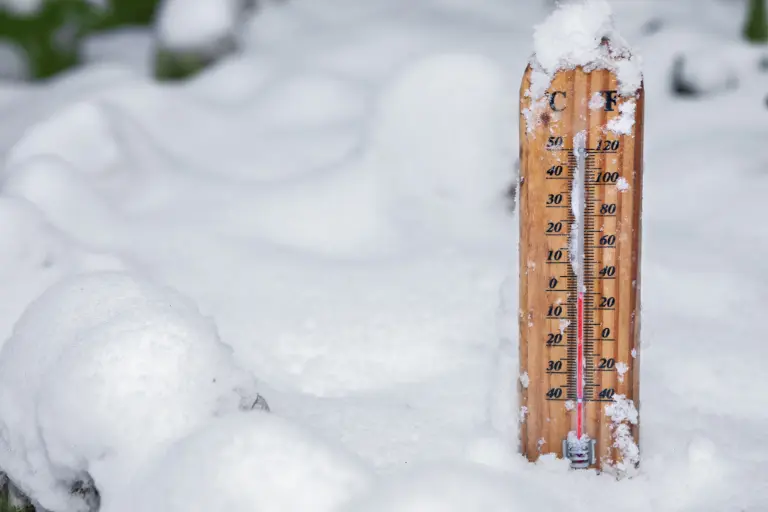Healthy cacti are usually vibrant green in color, and sometimes, you can meet a grafted cactus that is tinted orange. But white? That’s not the natural color!
If you see your cactus slowly turning white, don’t panic. There are many possible reasons why this may be happening and if you spotted it early on, it is very easy to fix too!
In this article, I will walk you through a few of the most common reasons why your cactus is turning white. Each issue manifests in a slightly different way, and I will describe it as best as I can so you easily uncover the real culprit.
| Key Takeaways |
|---|
| White cacti coloration is commonly caused by the lack of sunlight, watering issues, or overfertilization |
| Overwatering can be observed as white, mushy spots on the plant |
| If the lack of sunlight is the culprit, you can notice your cactus stretching or leaning toward the nearest light source and the vibrant green slowly fading away |
| If the watering has its origin in nutrient deficiencies or overfertilization, you will often notice different coloration across the cacti depending on the nutrient lacking or abundant |
Overwatering as the Culprit
If you've been a bit too generous with the watering can, your cacti might reveal its distress through white, mushy spots on the plant stem. These patches signal root rot, where excess moisture creates a breeding ground for harmful fungi. These spots can slowly turn brown as the plant tissue dies away.
Cacti are succulent plants that are accustomed to infrequent but heavy watering. Allow the soil to dry completely out between watering to give the cactus roots a chance to recover.
Many gardeners, including myself, prefer the watering method of water bath. Using this method, you completely submerge the whole pot in the water, making sure all of the soil is under water. As the soil soaks all that liquid, it will bubble. Once the bubbling stops, lift the pot and let the excess drain off. Repeat as needed; I do this only once a month. This ensures your cactus gets enough water while leaving enough room to dry out.
If overwatering was on the regular schedule, it may be a good idea to repot the cactus and start again. Choose a well-draining soil and a bot with drainage holes at the bottom.
The Cactus is not Getting Enough Sunlight

If you notice the color slowly fading away and a stretched-out appearance, the likely culprit is insufficient sunlight. The discoloration or white appearance usually start to appear from the bottom of the stem slowly continuing upwards.
This can be an issue especially during early fall, when it’s consistently cloudy but it’s not late or cold enough for the plant to go dormant. As a result, your cacti still work to the fullest, requiring a lot of sunlight that it doesn’t get.
To photosynthesize effectively, cacti need at least six hours of indirect sunlight each day. Relocate the pot to a spot where it can bask in the sun. South or west-facing windows are ideal, but if natural light is limited, consider supplementing with a grow light. Also, don’t forget to rotate the plant here and there to ensure all sides receive equal sun exposure and encourage balanced growth.
On the other hand, too much sun exposure is also an issue, but will rarely manifest as white or pale spots. If a cactus is under direct sunlight all day, you will rather notice brown, burned spots. These spots are caused by the UV rays, which destroy the living cells. However, the solution is the same—relocate the pot to a more suitable location.
Cactus Turning White From Overfertilization or a Lack of Nutrients
Nutrient Imbalance is one of the causes that can manifest in a many different ways. If the cactus gets more of a nutrient that it can absorb, it can build up on the surface of the plant and the soil as white, crusty deposits. This applies to minerals present in the water as well. On the flip side, a lack of nutrients or some nutrients in an excess amounts can make your cactus fade aways or make patches varying in color.
White patches on cacti due to overfertilization or the lack of nutrients are the hardest to reliably detect, at least without various test kits, which can get quite expensive.
If you think white spots on your cactus can be caused by overfertilization, cut back on fertilizing. Cacti should be fertilized only every 8 to 10 weeks during the growth season.
Mineral deposits can also be caused if you water with tap water, especially if your location has hard water. This will usually manifest as a thin layer of white dust on the surface of the plant, where the water evaporates.
Cactus Turned White Because of Frostburn

Frostburn occurs when cacti, typically adapted to warm and arid climates, are exposed to a bigger temperature jump. The telltale signs are white or discolored patches on the surface of the cactus, often accompanied by a soft, mushy texture.
The damage caused by frostburn disrupts the plant’s cells, leading to a loss of pigmentation and structural integrity.
To remedy frostburn, first, assess the extent of the damage. Trim away any visibly affected areas with clean, sharp tools, leaving behind healthy tissue—my guide on How to Trim a Cactus to do it the right way can help you with that.
If the frostburn is extensive, consider moving the cactus to a warmer location or providing temporary protection during cold spells.
Pest Infestation as the Cause for Cacti Turning White
There are many insects and bugs that give away their presence by leaving a white, waxy residue on the cactus surface. Some tiny invaders can also lay tiny eggs closely together making a white patches on the cacti surface.
A white appearance on a cactus is often the result of bugs such as spider mites, aphids, and mealybugs. You might notice a white waxy residue on the plant surface called honeydew or cottony masses and small- shell-like protrusions on the cactus.
Left unchecked, a pest infestation can compromise the overall health of your cactus and contribute to overall dieback.
A minor pest infestation can be solved by simply wiping away the pests using a cotton swab dipped in rubbing alcohol. For a more extensive infestation, opt for an insecticide and quarantine the infected cactus to prevent the pests from spreading to other plants.
Before you go…
Dealing with ill plants, such as cacti with white spots, can be a bummer. Once your cactus is healthy again, you want to make sure it stays like that for a long time. And I have something to make sure your cactus looks the best it can because your cactus deserves to shine! Make sure to check out my guide on cleaning succulent leaves with a simple recipe for homemade leaf shine…




